Primary, secondary education in South Korea for international students
-
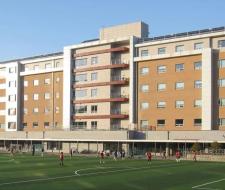 from 7050.00 $ / yearApply with documents
from 7050.00 $ / yearApply with documents -
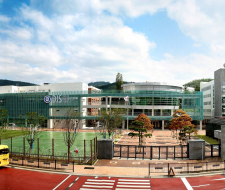 from 19500.00 $ / yearApply with documents
from 19500.00 $ / yearApply with documents
-
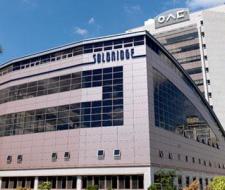 Accreditations AACSB
Accreditations AACSB South KoreaDaejeonCurrently watching: 8Apply with documents
South KoreaDaejeonCurrently watching: 8Apply with documents -
 from 7050.00 $ / yearApply with documents
from 7050.00 $ / yearApply with documents -
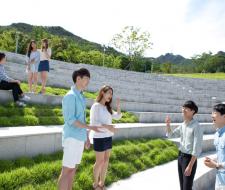 Apply with documents
Apply with documents -
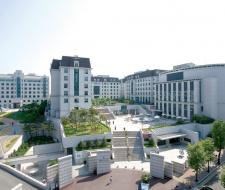 Apply with documents
Apply with documents -
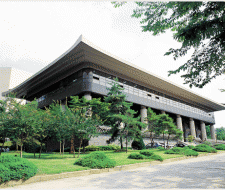 Apply with documents
Apply with documents -
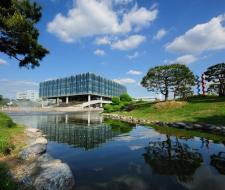
 South KoreaDaejeonCurrently watching: 2Apply with documents
South KoreaDaejeonCurrently watching: 2Apply with documents -
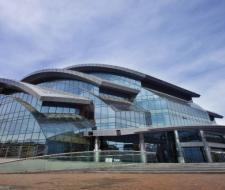 Apply with documents
Apply with documents -
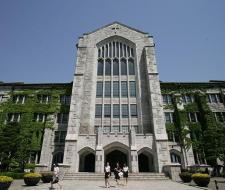 Apply with documents
Apply with documents
Alternative destinations
Education information
South Korea's education system is undergoing rapid development. If since the middle of the XX century there has been an increase in the number of preschool, school and higher educational institutions in the country, then the XXI century was marked by the active entry of South Korean universities into the international arena. At the same time, the share of foreign students in the country is growing from year to year.
School education in South Korea includes 3 stages. The first two – primary and secondary schools are mandatory to attend. At all school levels, the duration of the lesson is 45 minutes. The academic year is divided into semesters. The first one starts in March and lasts until mid-July. The second semester is from the end of August to the tenth of February. The academic load varies from a few lessons in elementary to 11 in high school.
Secondary education in Korea is accompanied by heavy academic loads: students attend additional private classes, do independent work, spending a total of 16 hours a day studying. This helps students achieve high results. Such trends are explained by the fact that students from childhood tend to enrol in the top universities of the country in the hope of securing a bright future with a prestigious job and high earnings.
Secondary education is implemented both in state and private educational institutions. In South Korea, both types receive funding from the state, although its volume in private schools is less than in public ones.
Schools in South Korea: A Detailed Overview
South Korea, known for its robust educational system, offers a comprehensive approach to primary and secondary education. This system is renowned for its emphasis on discipline and academic rigor, setting the stage for successful university admissions.
Primary Schools in South Korea
Primary education caters to children aged 6 to 12 and spans six years. The curriculum includes:
-
Korean language
-
Mathematics
-
Sciences
-
Social sciences
-
English (starting from the third year)
-
Fine arts and music
In primary schools, most subjects are taught by a single teacher in a consistent classroom environment. Progression to the next grade is based on age rather than academic performance.

What would you say is the most important when choosing a school?
This is the quality of support and work of the management, the opportunity to study at IB, the prestige of the school and the percentage of successful completion of the diploma stage of IB, recommendations for further universities. It is worth considering the national "recruitment" of campus students, opportunities for extracurricular development and activities, the availability of medical services and consultations, opportunities for language immersion. Is education at the chosen school based on the values you share? Is the school a close-knit community? Is academic support good?
Secondary Schools in South Korea
For students aged 12 to 15, secondary school programs last three years. Here, different subjects are taught by specialized teachers. Compared to primary schools, secondary schools place greater emphasis on discipline, including uniform and hairstyle regulations. The curriculum encompasses:
-
Mathematics
-
Korean and English
-
Sciences
-
Art, history, Chinese hieroglyphics (Hancha), ethics, home economics, and physical education
Although grades don’t impact progression to the next grade, performing well in the final year is crucial for university entrance exam preparation. Post-middle school, students typically choose between high school and vocational school, where they can obtain a practical specialty in 2-3 years.
High Schools in South Korea
Nearly 98% of Korean students attend high school, the highest rate globally. This optional educational level, spanning three years for students aged 15-19, offers specialized programs in science, languages, and arts. The curriculum is intensive, often including up to 11 subjects. Students spend significant time on self-study, preparing for the final Korean exam, analogous to the SAT, covering Korean, Math, and English. This exam is a pivotal event in a Korean student's life, as university admission largely depends on its results.
Cost of study in South Korea for International Students
International schools in South Korea, offering English-language curriculums based on American or British models, including the International Baccalaureate, cater to foreign students. The average cost at these international schools is approximately 14,200 USD per academic year. Foreign students can also attend regular Korean schools, but education is primarily conducted in Korean.
In conclusion, secondary education in South Korea is characterized by high academic standards and a disciplined approach, offering both local and international students a solid foundation for university studies and future careers.
Learning programs-summary information
| Name | Meaning | Equivalent | Min. age | Duration, years |
Next stage | Cost |
|---|---|---|---|---|---|---|
| GCSE | General certificate of secondary education | secondary education (non-accomplished) | 14 | 1–2 | A-Levels | 15,000 USD+ |
| A-Levels | Advanced level | secondary education (accomplished) | 16 | 2 | University | 15,000 USD+ |
| BTEC | Business and Technology Education Board | secondary special education | 14 | 2–3 | University/ work | 15,000 USD+ |
| Oxbridge Preparation | Preparing for Oxford and Cambridge | secondary education (accomplished) | 17 | 1 | University | 15,000 USD+ |
| International Baccalaureate | International baccalaureate | secondary education (accomplished) | 16 | 2 | University | 18,000 USD+ |
| Foundation/ Pathway Year | Preparatory year | admission to the 1st year of university | 17 | 1 | University | 14,000 USD+ |
| NCUK | The Northern consortium | 2 year university | 17,5 | 1 | 2 year University of NCUK | 13,000 USD+ |
| Special Preparation (Medics/Math/Business) | Specialized training | - | 14 | optional | optional | 4,000 USD+ |
| Academic English | Academic English | Language school | 8 + | 6–12 months | School or University | 8,000 USD+ |
Advantages and disadvantages of English schools
| Advantages | Disadvantages |
|---|---|
| The opportunity to enter the best universities in England, USA, Canada, Switzerland, Europe, the world | Expensive |
| High quality of education and academic standards | Strong workload |
| Perfect English after graduation | The need to change the social environment; it takes time to adapt |
| Useful contacts | The difficulty of choosing the most suitable school for the child, requires a qualified specialist |
Top 21 boarding colleges in England 2024
| 1 | Cardiff Sixth Form College |
| 2 | National Mathematics and Science College |
| 3 | Abbey College Cambridge |
| 4 | d'Overbroeck's College |
| 5 | MPW London |
| 6 | CATS Cambridge |
| 7 | Kensington Park |
| 8 | DLD London |
| 9 | King's College St Michael’s |
| 10 | Bellerbys Cambridge |
| 11 | Chelsea Independent College |
| 12 | MPW Cambridge |
| 13 | Bellerbys Brighton |
| 14 | CATS London |
| 15 | St Clare's Oxford |
| 16 | Bishopstrow College |
| 17 | CATS Canterbury |
| 18 | Bellerbys London |
| 19 | Ealing Independent College |
| 20 | Cambridge Tutors College |
| 21 | Abbey Manchester |



